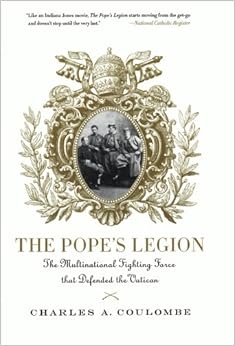
This is a book about the 60s.
Yet it has nothing to do with civil rights, sexual liberation, LSD and other forms of chemical ‘liberation’. Nor is there anything about student riots, the ‘right’ to abortion on demand, Woodstock and general revolt against the Establishment. And neither Hugh Hefner nor Martin Luther King receive a mention.
Because (and forgive me for this perhaps puerile ploy, dear Lector) this is not a book about the 1960s—but rather the 1860s.
Yes: it is a book about what was important to our ancestors.
And if my opening lines are somewhat silly, I hope they will serve to emphasise how very, very different attitudes can be within the space of a centenary.
For here we have the story a battle – of the very literal, visceral, blood and guts kind – between the different visions of the world that competed at this epoch.
Indeed, the book is largely military history, but in order to appreciate that, it is necessary to first understand, what people of the West considered worth fighting for 150 years ago.
On the one hand, there is the liberal world vision set in motion by the Enlightenment and the revolutions that succeeded in its wake.
This is to speak of the American Revolution (1776) the French Revolution (1789) and various other European and Latin American revolutions that were to follow.
There is the call is for (a supposed) liberty, equality, fraternity – untrammelled by ancient structures, structures which had for centuries been deemed sacred.
The call is for establishing these by tearing down what generations had once held dear – even if it means genocide, in certain cases at least (e.g. the Vendée in France).
On the other hand, there is the world vision of those who hope to preserve Christendom. There is the world vision of people who do not want “Godless republics” and are prepared to die – and to kill – for the continued vision of a society explicitly oriented to Jesus Christ.
Tragedy: To die and to kill … as they repudiate a society consecrated to a liberal philosophy of a vague Deism at first, but which – as history has shown us repeatedly in countless locales – becomes ever more progressively hostile to Christianity.
Yes in the 1860’s Catholics still felt they were witnesses to the tragedy of the West. In the 1860’s, all these things still mattered to them.
And this unusual and remarkable book by Charles A. Coulombe can do much to illumine why they mattered.
More specifically, Coulombe’s book is focussed on a military conflict in the Italian peninsula of the 1860s. There is no single unified Italian state at the time. What would become Italy has long been divided between a number of different territorial powers.
One of these was that of the Pope – monarch of the Papal states. As Coulombe explains:
The Pope is the bishop of Rome, in succession from Saint Peter, chief of the apostles.
That is what Catholics believe, and from that simple – if eternally disputed – statement flows all else about the office.
Given that the Pope is head of a universal Church, his followers have always felt that, in order to exercise his spiritual power impartially it was necessary for him to be independent of any earthly power.
And for a thousand years before the 1860s, it had been understood that there should be Papal States to safeguard independence.
The emperors and kings of Christendom had repeatedly come to their defence over the centuries.
However now there were those that want to unite all of Italy. In effect, this meant declaring war on the Pope at the time (the recently beatified Bl. Pius IX) in order to forcibly annex the Papal States to an expanding Italian monarchy.
In the view of one section of the populace, it belongs to the “legitimate aspirations” of the Italian people to live in a modern Italian state, which is not subject to a medieval autocrat.
But what of the forgotten other section of the populace who cried out in despair and indeed horror?
It is a maxim that history is written by the victors. Most modern readers will have grown up steeped in that version of history.
And the viewpoint that most of us moderns naturally absorb – uncritically absorb like a sponge perhaps – is that of course, men like Garibaldi and his Italian nationalists and revolutionaries were right: of course, forcibly annexing the Papal States was perfectly legitimate …
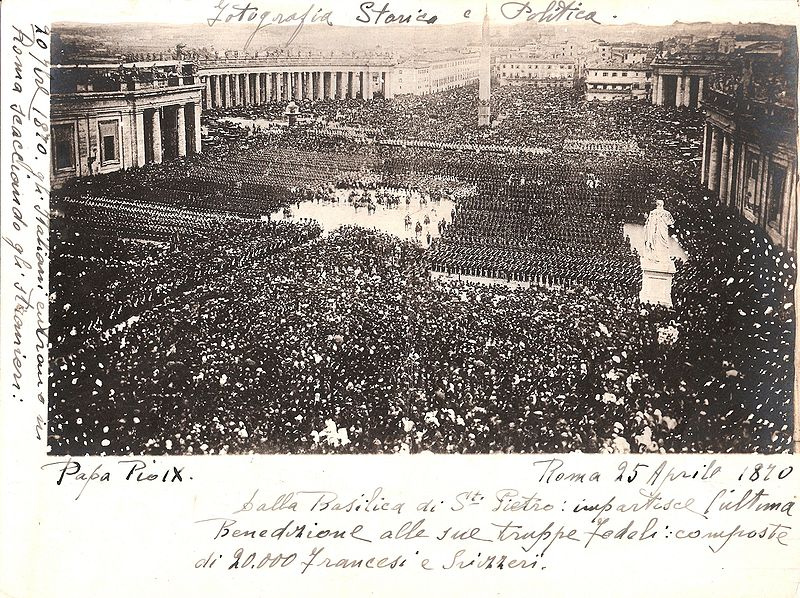
Coulombe’s rich and heartfelt writing can help to redress such uncritical, spongelike absorption.
Now this is not to say that one should absorb Coulombe like a sponge, either. It is to suggest that we need to read history as written by the losers, to gain perspective at very least.
I have already reviewed Coulombe’s rich and fascinating Puritan’s Empire – a history of America that among many others things tries to illumine the perspective of the losers.
In the American case, these include the loyalists to the Monarchy often driven into Canada or the Spanish and French Catholics who were in a multitude of ways repressed by a WASP establishment centred in the Northeast, which grew into a powerful financial-industrial oligarchy …
But let us return to the present book about the Italian peninsula, as it still was in the 1860’s and as it had been for centuries.
The Pope’s cause will prove hopeless. He cannot stand the combined invading forces against him. At least, not without the support of France – which support is wavering.
Nevertheless the Holy Father calls for an army. And from across the world they come: 25,000 volunteers.
Modern readers may well be astonished. Why is the Pope issuing a call to arms to wage bloody war?
Moreover this is one of the very few modern Popes to be beatified. Bl. Pius IX was beatified in the (hardly insignificant!) year 2000; perhaps ere long, he is to be canonised as saint …
Yes the present day Vatican would appear to be on course towards canonising a Pope, who believed in military force to defend the remnants of Christendom.
What is at stake here?
Far more is at stake than we can provide in a book review. And I urge those interested to consult Coulombe’s fine effort …
Still I should like to emphasise that part of the answer lies in what I call the Dictatorship of Secularism. For by the (secularist) victors, we are repeatedly told – implicitly and explicitly – that our modern secular society naturally and freely evolved, progressively realising freedom …
The truth is rather more complex – as Coulombe’s study of the 1860’s Italian peninsula makes clear:
The continual cry of [Italian nationalists] had been “a free Church in a free State” … their opposition to the papacy was purely political …
Reality was brought home in the spring of 1866 [after the first Papal territories had been conquered, though not yet Rome herself] when a far-reaching law was passed by the Italian parliament that called for the exile and imprisonment of bishops deemed disloyal to the new order, keeping dioceses vacant and preventing the communication of bishops with Rome; forbidding publication of papal encyclicals; suppressing chapters of canons and seizing their property; closing seminaries …
demanding civil marriage for all; secularizing education and closing Catholic schools …
forbidding the religious processions so loved by the Italians; and abolishing all monasteries and religious orders, giving their property to the government …
There were many religious houses in the country … beloved abbeys … were either emptied of their monks and transformed into barracks, public offices or simply sold …
This measure … strengthened Pius’s determination never to come to an accord with the government and naturally raised the number of recruits for the pontifical army.
As Coulombe points out, other powers in Europe were less than overjoyed by Papal resistance to being taken over.
Catholic Ireland was still dominated by London then. As Coulombe explains, great numbers of the Irish went to defend the Pope. They were threatened with prosecution by the British government.
But if Protestant British joined the Italian armies against Rome, they were no such threats …
Yes this book can do much to illumine the origins of secular ideology and its imposition on us.
However, I do not want to mislead the reader. As I said above, much of the book is concerned with military history. It records in detail the battles fought, sometimes won but ultimately lost by the Papal Zouaves.
The Papal Zouaves were the army who came from across the world to the call of the Pope.
There are I suppose military buffs who will read the battle scenes avidly. They are well written, but I must confess that I am not such a buff myself.
Military tactics do not absorb me. Though the book certainly evokes my sense of wonder for the spirit that can be summoned forth, when men join together to fight for a cause they believe both holy and hopeless at one and the same time …
Deep and lifetime bonds of loyalty will exist for such companies of men. And in poignant, wistful ways, Coulombe details what happened after the Zouaves finally lost the Papal States in 1870.
This is to say, what happened after the Pope became a “prisoner of the Vatican” for decades – until the tiny postage -stamp sized Vatican City micro-state was finally recognised in 1929.
For after 1870, many of the Papal Zouaves would go to fight for France against Prussia.
And towards the end of the book, Coulombe includes a stirring chapter about the French conflict called “Same Foe, Different Field.”
And he details how in the process of the battle shifting to France, the spirit of the Zouaves became more permeated with the French Counter-Revolutionary Spirituality of the Sacred Heart.
This last is important to this website. We have invoked it many times (e.g. here) and we wish to do far more to explore it in the future.
For now, we simply offer one last striking passage from Coulombe:
The growth and veneration of the Sacred Heart of Jesus, in military and civilian circles alike – with its allied devotions to the Precious Blood and the Kingship of Christ – were a direct product of the actions of the Zouaves …
The twin themes of sacrifice and Catholic transnationalism that played such a large role in the Church’s life during the nine decades following the fall of Rome may be laid at their door.
Yes: nine decades until 1960 …
In sum, this is a book that will be particularly savoured by traditional Catholics, interested in military history.
For myself, the riches here are largely elsewhere than the latter – but they are great riches indeed. There are both very important and very moving things throughout this book. I am very grateful for having not simply read it, but studied it …
And I salute Mr Coulombe’s various fine and moving efforts to open out for us a lost world …
A lost world of Catholics who did not uncritically believe that everything modern was good and did not uncritically assume that ancient sacred structures were necessarily outmoded now …
A lost world of Catholics who cared enough about their Church to die in hopeless battle, if need be …
A lost world of Catholics who could still vividly feel that amidst modern calls for freedom, another form of freedom was being destroyed – sometimes with brutal, bloody force, more often through erosion by an imposed ideology …
Yes, Charles A. Coulombe, I salute you for all the various acts you are accomplishing, accomplishing towards the restoration of memory …
Foreword for Monarchy by Roger Buck

Buying Books at Amazon Through These Links Gives Us a Commission. This Supports Our Apostolate. Thank You if You Can Help Us Like This!


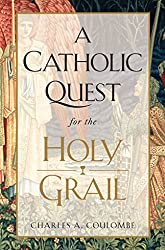


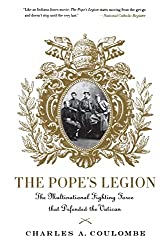

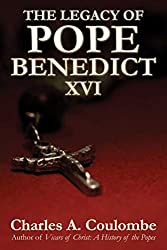
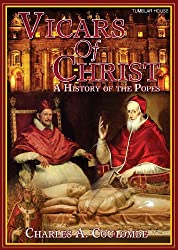




Comments
comments are currently closed
9 responses to “The Pope’s Legion by Charles A. Coulombe (Review)”
[…] Cor Jesu Sacratissimum HomeDedicationAbout UsKim's WeblogRoger's WeblogWebburstsReviewsArticles « Book Review: The Pope’s Legion by Charles A. Coulombe […]
Book Review: The Pope's Legion by Charles A. Coulombe…
Here at World Spinner we are debating the same thing……
[…] Cor Jesu Sacratissimum HomeDedicationAbout UsKim's WeblogRoger's WeblogWebburstsReviewsArticlesUK StoreUS Store « Valentin Tomberg, Catholic Tradition and the Counter-Revolution Book Review: The Pope’s Legion by Charles A. Coulombe » […]
[…] Note: Some readers may wish to know that I have recently reviewed a book by Charles A. Coulombe that is all to do with the Ultramontane Counter-Revolutionary Catholicism which expressed itself at Vatican I. The book is called The Pope’s Legion and the review is here. […]
The main topic here, the main factor of all these events, is not even mentioned: (Free)Masonry.
Thank you Akira. I am happy to publish this comment – though your other comments seem too inflammatory to me. (More on those below).
It might be said that Masonry is not particularly mentioned in the book – although I am certain the author is clear as to what was working to destroy the Church in this particular historical situation.
Different approaches can be valid at different times, I think.
Several Popes devoted encyclicals warning very gravely of the danger to the Church of Masonry. They judged an explicit approach as necessary.
Watching the present Holy Father, one sees less explicit, more subtle language for the same.
Evaluating which strategy is best is no easy task.
Finally as to your other comments that I judge “too inflammatory” to publish here – may I say that I do recognise that your heart must feel acutely the damage being done to the Church. I am glad your heart is awake to this and not asleep. The choice as how to express oneself – after recognising the threat to the Church – is I think a key thing.
[…] Indeed I have reviewed The Pope’s Legion at length here at this site and perhaps it is helpful if I quote from that review here: […]
[…] [All of this is also considered in a remarkable book by Charles A. Coulombe, The Pope's Legion – which he have considered at length here – […]
[…] He knew nothing, for example, of how a truly vicious secularism had crushed the Church in France and other parts of Europe. He knew nothing of things like the loss of the Papal States, which Coulombe has chronicled in a poignant book (reviewed here). […]
[…] is a review of this book on the Papal Zouaves here at this site – and that review may also further serve to clarify the issues here – […]